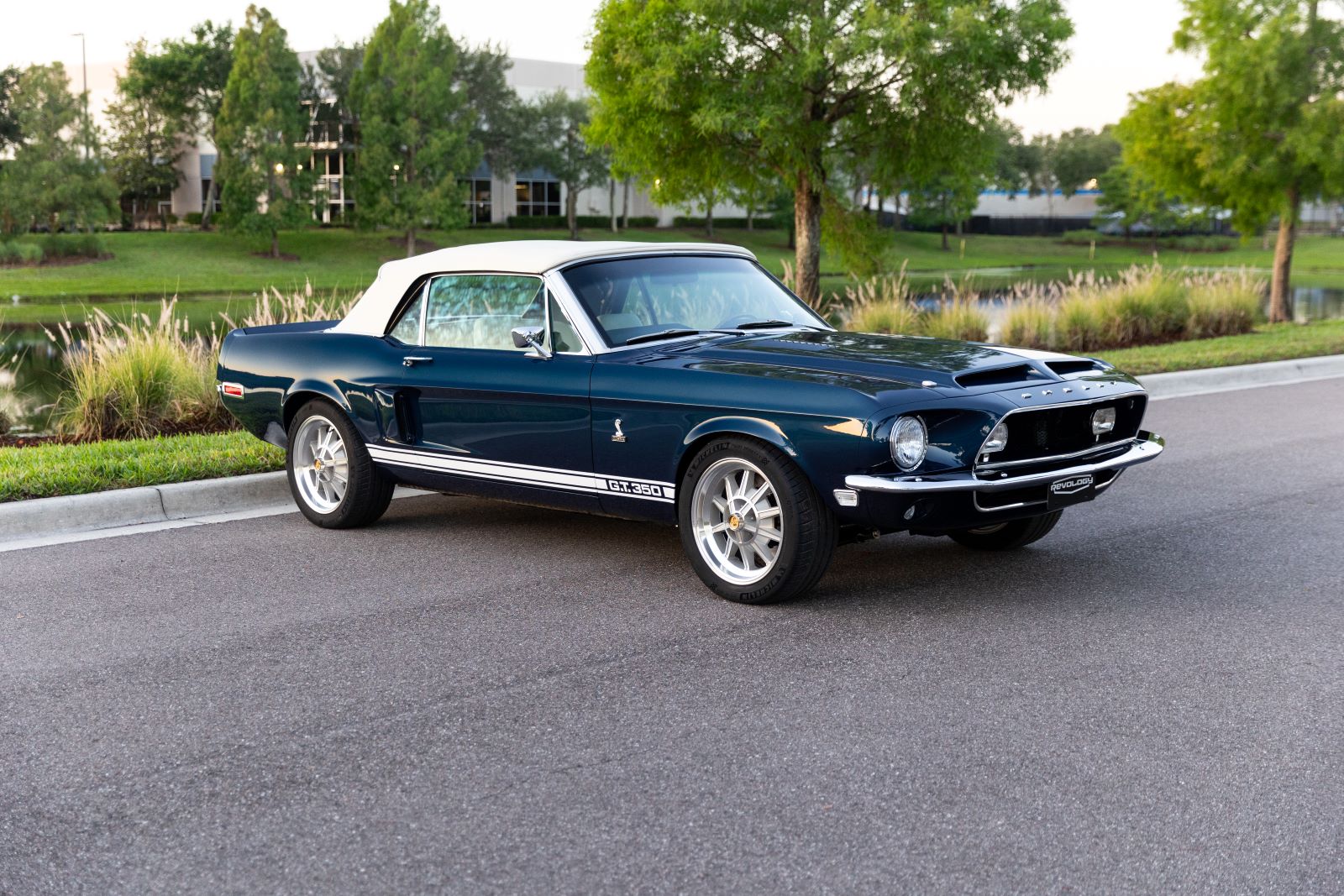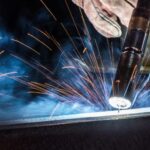The collaboration between Ford and Carroll Shelby in the 1960s yielded some of the most exhilarating pony cars, pushing boundaries in design and capability. For 1968, production shifted to Ford facilities, allowing greater integration while retaining Shelby’s performance ethos. Convertible models introduced open-air excitement to the lineup, expanding appeal beyond coupes. A prime example of this evolution is the 1968 Shelby GT350 Convertible, which combined refined engineering with distinctive aesthetics. This rare variant, limited to 404 units, encapsulates the era’s blend of luxury and muscle.

Historical Production Context
Only 404 convertibles joined the 1,664 total 1968 Shelby GT350s, marking the first drop-top in the series. Assembly began at Ford’s San Jose plant as Mustangs, then finished in Michigan with Shelby modifications. This process ensured factory quality alongside bespoke touches. Consequently, each vehicle received a unique Shelby serial number on the dash and fenders. The late introduction reflected growing demand for versatile performance cars amid muscle car competition.
Transition from Prior Years
Unlike 1967’s California-built Shelbys, 1968 models benefited from Ford’s assembly lines for consistency. Convertibles required additional chassis bracing to maintain rigidity without the roof. Functional roll bars integrated seamlessly for safety. Moreover, power tops with glass rear windows became standard, enhancing usability. These changes broadened market reach while preserving racing heritage. Marti Reports detail build specifics, including colors and options. Original window stickers list Shelby additions like hood scoops. Registry membership verifies provenance. Therefore, documented examples stand out in collections, highlighting the convertible’s scarcity.
Exterior Design Elements
The 1968 Shelby GT350 Convertible featured a fiberglass hood with dual ram-air scoops, secured by chrome pins for engine cooling. Side scoops vented heat, and a rear spoiler aided stability. Lucas fog lamps flanked the grille, with LeMans stripes in gold or black. In contrast to standard Mustangs, these elements created an aggressive, purposeful silhouette. Hood scoops fed cool air directly to the carburetor, boosting intake efficiency. Rear quarter scoops expelled brake heat during hard stops. The convertible top folded flush, maintaining clean lines. Additionally, wide fender flares accommodated performance tires. This design optimized airflow for both speed and durability.
Color and Trim Options
Factory palettes included Wimbledon White, Raven Black, and Candyapple Red, often with contrasting stripes. Chrome trim accented rockers and wheels. Badging displayed “Shelby” script and Cobra emblems precisely. Thus, visual cues instantly identified the model amid Mustang variants.
Interior Appointments and Comfort
Deluxe interiors boasted bucket seats with inertia-reel belts and a wood-rimmed steering wheel. Auxiliary gauges monitored oil and amps, mounted in the console. A 140-mph speedometer and tachometer emphasized driver focus. Carpeting extended to the trunk, with fold-down rear seats for versatility.
Safety and Convenience Features
Integrated roll bars provided rollover protection without intruding on space. Power steering and brakes eased control in the heavier convertible. Visibility groups added map lights and mirrors. Furthermore, the top mechanism operated smoothly via switch. These amenities elevated daily drivability. Controls positioned intuitively, with a short-throw shifter for manuals. Woodgrain dash inserts added elegance. Ventilation directed airflow effectively with the top down. Accordingly, the cabin fostered an engaging yet comfortable environment.
Performance and Mechanical Specifications
The heart of the 1968 Shelby GT350 Convertible was a 302 cubic-inch V8, producing 250 horsepower and 310 lb-ft of torque. A Holley four-barrel carburetor and aluminum intake sharpened response. Four-speed manuals or automatics transmitted power to a Detroit Locker differential.
Cross-drilled crankshafts and high-flow heads improved revving to 6,000 rpm. Dual exhausts with low-restriction mufflers delivered a distinctive note. Optional Paxton superchargers elevated output significantly. In comparison, base Mustangs lacked this calibration.
Suspension and Braking Systems
Heavy-duty springs and Gabriel shocks tuned for balance, with front discs for fade resistance. Staggered rear shocks minimized hop. Traction bars enhanced launches. As a result, the convertible cornered confidently despite open structure.
Modern Revology Cars Interpretations
Revology cars produces licensed recreations of the 1968 Shelby GT350 Convertible, utilizing precision engineering for authenticity. New steel unibodies ensure structural integrity with CAD accuracy. Revology cars blends vintage charm with current technology seamlessly. LED sequential taillights improve visibility. Power tops with one-touch operation add ease. Infotainment integrates discreetly. This approach delivers the open-top thrill without compromises.

Conclusion
The 1968 Shelby GT350 Convertible excels through its functional design, potent 302 V8, and thoughtful interiors that define Shelby excellence. From ram-air induction to reinforced chassis, every feature enhances the driving experience. Modern builds from Revology cars preserve this heritage with superior refinements. In summary, the model remains a coveted symbol of 1960s automotive innovation and joy.
FAQs
How many 1968 Shelby GT350 Convertibles were produced?
Exactly 404 units, part of the total 1,664 GT350s for 1968. This scarcity stemmed from the convertible’s mid-year debut and structural modifications required for open-top integrity. Production occurred at Ford plants with final Shelby touches in Michigan, ensuring each carried unique identification.
What engine distinguished the 1968 Shelby GT350 Convertible?
The 302 cubic-inch V8, rated at 250 horsepower with a Holley carburetor and aluminum manifold. It replaced the prior 289 for better emissions compliance while maintaining high-rev performance. Tuning allowed smooth power delivery suited to the convertible’s grand touring nature.
Which styling elements were unique to the 1968 Shelby GT350 Convertible?
Fiberglass hood with dual scoops, side heat vents, Lucas fog lamps, and LeMans stripes. Cobra badging and chrome pin locks completed the look. These differed from standard Mustang convertibles, emphasizing racing pedigree and functionality.



